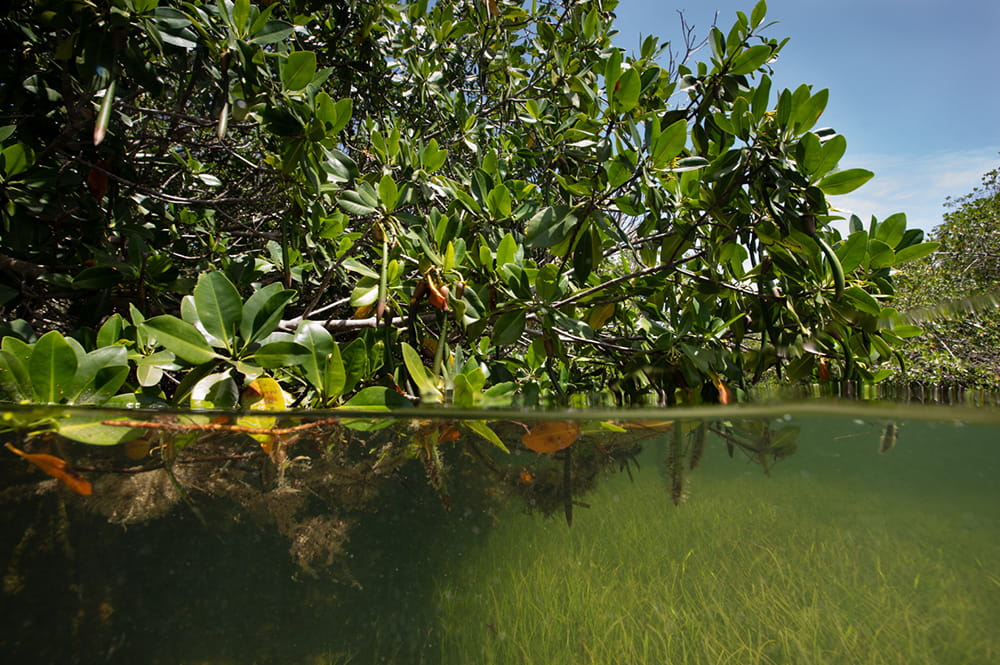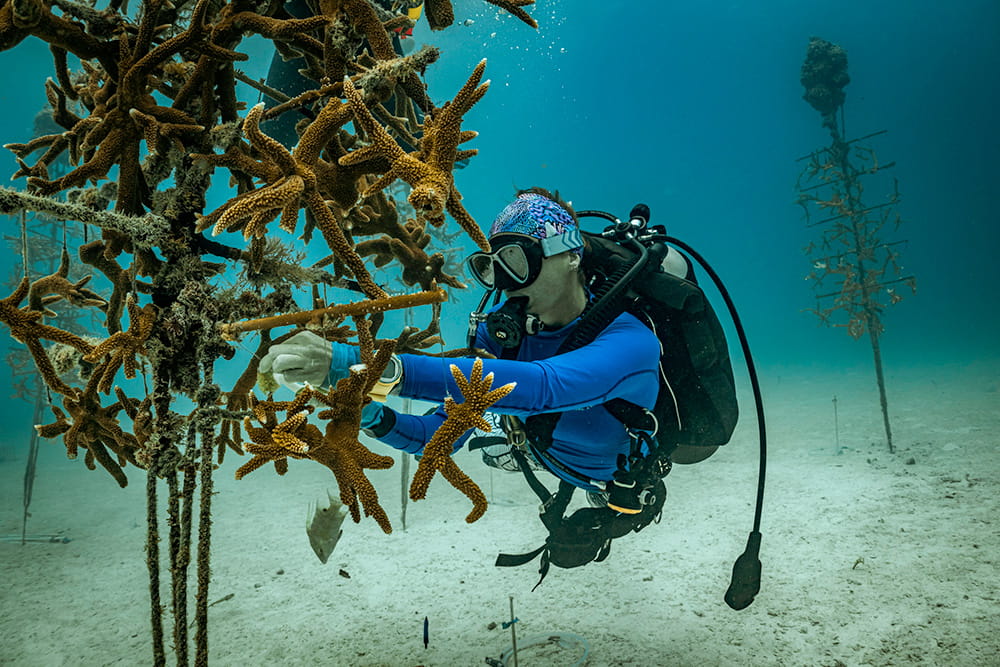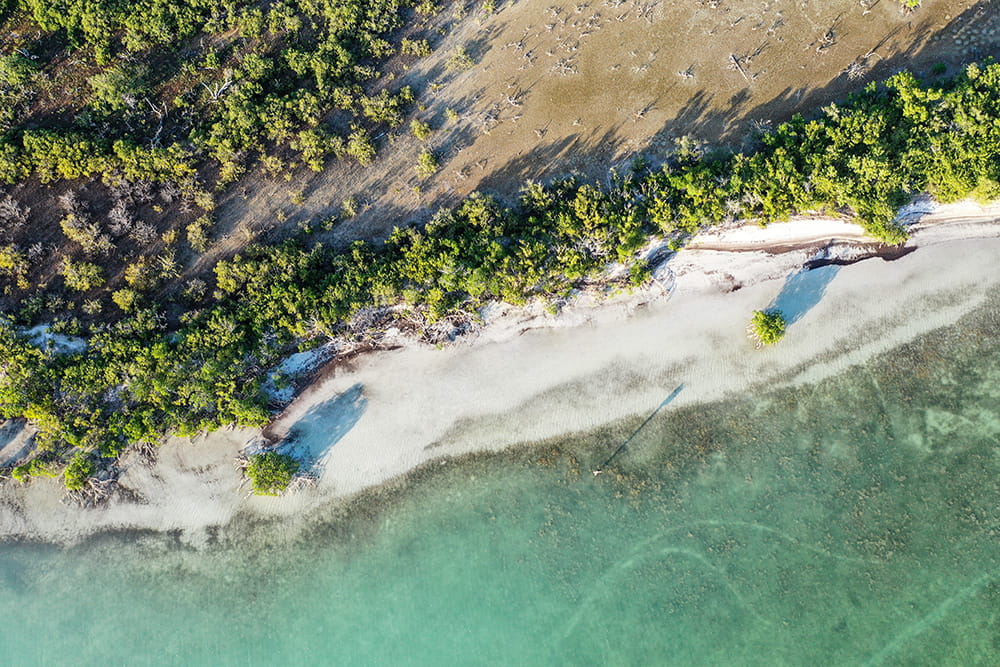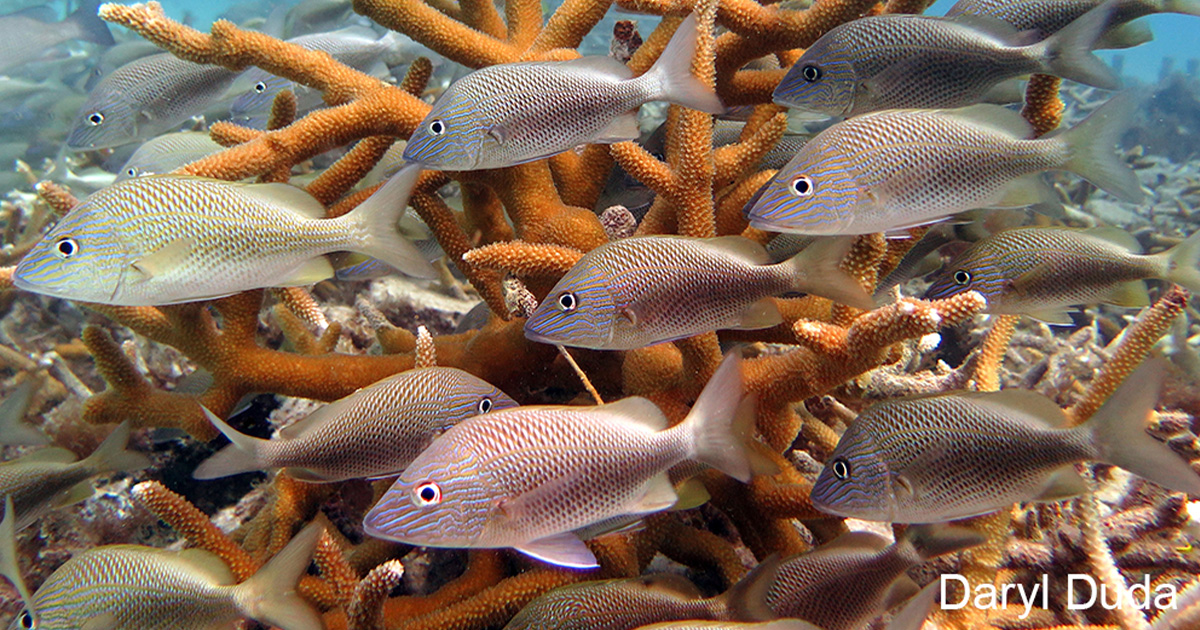South Florida has the largest remaining subtropical wilderness in the United States and contains the only shallow coral reef formation in the continental United States. The lush seagrass beds, mangrove-fringed shorelines, and nearshore coral reefs in Florida Keys National Marine Sanctuary provide food and shelter to more than 6,000 species of marine life and contribute $4 billion annually in tourism.
South Florida is also on the front lines of climate change. Record-breaking water temperatures and other stressors such as ocean acidification, hypoxia (low oxygen), harmful algal blooms, and excessive nutrients are putting the future of these reefs at risk.
NOAA is announcing $4.2 million for a four-year research project geared towards understanding multi-stressor impacts on Florida's marine ecosystems under different climate change scenarios. This research is critical to habitat restoration projects that are already underway, including Mission: Iconic Reefs in NOAA's Florida Keys National Marine Sanctuary and Comprehensive Everglades Restoration Plan in Southwest Florida.
Multiple Stressors
South Florida's ecosystems are all intrinsically connected. In addition to livable water temperatures, corals need clean, clear, water to stay healthy. The seagrasses, mangrove communities, and freshwater Everglades habitats adjacent to coral reefs need to be in good condition to deliver important ecosystem services such as sediment stabilization, nutrient cycling, and water filtration—all of which play a role in keeping coral reefs healthy.
 Mangrove and seagrass habitats are intricately connected to the coral reef ecosystem. Seagrass communities are the link between wetland and mangrove communities and hardbottom and coral reef habitats. (Image credit: Stephen Frink)
Mangrove and seagrass habitats are intricately connected to the coral reef ecosystem. Seagrass communities are the link between wetland and mangrove communities and hardbottom and coral reef habitats. (Image credit: Stephen Frink)
The development of drainage canals to support coastal development, agriculture, and flood control throughout South Florida's Everglades has reduced the flow of freshwater in Florida Bay, resulting in seagrass die-offs, plankton blooms, and changes in fish and invertebrate populations. In addition, stressors such as climate change, ocean acidification, hypoxia, harmful algal blooms, and excessive nutrients are putting the future of Florida's Coral Reef at grave risk.
Since South Florida's ecosystems are all tied to one another, it is important to conduct "big picture" studies like the Florida Regional Ecosystem Stressors Collaborative Assessment (FRESCA) project, that can capture how these many combined stressors impact each of these ecosystems together under present and future climate change scenarios.
A Rough Summer for Coral
Mission: Iconic Reefs is a large-scale NOAA-led coral restoration initiative within Florida Keys National Marine Sanctuary to restore seven ecologically and culturally significant coral reefs to self-sustaining levels by 2040. Launched in late 2019, the unprecedented effort is a collaboration with world-renowned scientists, local restoration partners, academia, industry, and federal and state agencies.
Throughout the summer of 2023, elevated ocean temperatures occurred over longer than normal durations, creating an extremely stressful environment for the coral reefs. This prompted a Herculean emergency removal and collaboration between Mission: Iconic Reefs partners and coral practitioners state-wide in order to safeguard the genetic diversity of Florida's coral reef-building species.
 Under Mission: Iconic Reefs, species like staghorn coral (pictured) are grown in coral nurseries and transplanted to reefs. (Image credit: Jay Clue)
Under Mission: Iconic Reefs, species like staghorn coral (pictured) are grown in coral nurseries and transplanted to reefs. (Image credit: Jay Clue)
In addition to waters heating up locally in the Keys, temperatures within the shallow Florida Bay heated up to extreme levels during the heatwave. As this water flowed through the passages between the islands of the Keys, it encountered the cooler Atlantic Ocean water and immediately sank to the bottom. This condition, known as a "reverse thermocline," bathed the corals in abnormally hot, salty waters, and caused severe bleaching and often rapid mortality.
"The Mission: Iconic Reefs sites in the Middle and Lower Keys directly exposed to Florida Bay experienced the highest overall extent of bleaching," said Sanctuary Research Coordinator Dr. Andy Bruckner.
Researchers Still Hopeful
As the events that took place this summer have demonstrated, climate change will continue to be a factor that coral practitioners, resource managers, and the corals themselves must contend with moving forward.
Ian Enochs, head of the Coral Program at NOAA's Atlantic Oceanographic and Meteorological Laboratory in Miami, said a key goal of the multi-stressor project is to show how climate change will impact the seven Mission: Iconic Reefs sites and how changing water quality parameters associated with the Comprehensive Everglades Restoration Plan may influence them.
 Near the coast, mangroves and seagrasses stabilize sediments, slow down water flows, reduce wave action, and trap the heavy metals and nutrient-rich runoff. (Image credit: Jack Fishman)
Near the coast, mangroves and seagrasses stabilize sediments, slow down water flows, reduce wave action, and trap the heavy metals and nutrient-rich runoff. (Image credit: Jack Fishman)
"By linking these ecosystems, we can evaluate all sorts of interconnected management strategies, such as restoring seagrass to act as an ocean acidification buffer for coral reefs," says Enochs. "Our research is built on these concepts to help evaluate the big picture responses of habitat and whether it will be able to keep up with global change."
Enochs said the ability to target resiliency will allow scientists to evaluate different coral restoration strategies to help ensure habitat protection under various climate scenarios.
Partnerships and Collaboration
The four-year project is co-led by NOAA's Atlantic Oceanographic and Meteorological Laboratory and the University of Miami's Rosenstiel School and involves more than nine collaborating scientists at seven institutions.
The funding was provided by NOAA's National Centers for Coastal Ocean Science Competitive Research Program, Climate Program Office, Ocean Acidification Program, and the US Integrated Ocean Observing System Office, in partnership with the Office of National Marine Sanctuaries.
Dawn Desmarais is the Mission: Iconic Reefs Communications Manager at Florida Keys National Marine Sanctuary.
Rachel Plunkett is the writer/editor at NOAA's Office of National Marine Sanctuaries.





